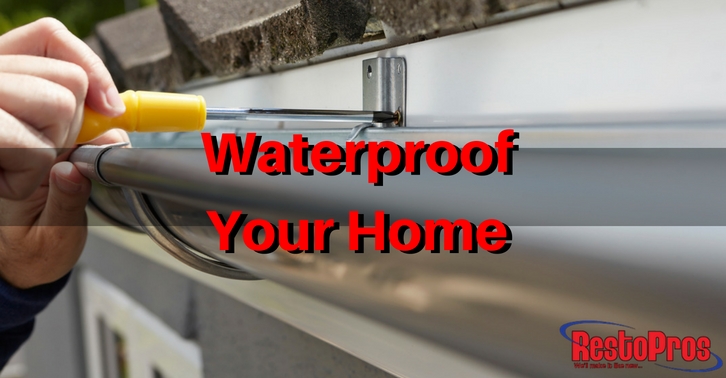 The first line of defense when it comes to protecting your home against water damage, mold, mildew, and even some smoke damage is to make sure that your home is waterproof. We aren’t talking about giving your home an IP68 waterproof rating (a completely sealed home would be difficult to breathe inside). With all the rain we’ve had recently, it’s a good idea to take a look around your home and find where problems are.
The first line of defense when it comes to protecting your home against water damage, mold, mildew, and even some smoke damage is to make sure that your home is waterproof. We aren’t talking about giving your home an IP68 waterproof rating (a completely sealed home would be difficult to breathe inside). With all the rain we’ve had recently, it’s a good idea to take a look around your home and find where problems are.
So start by watching your house when it rains. If you spy a leak or see pooling water somewhere, dry it out and take care of the repair as soon as possible (preferably before the next rain storm). Then, once you’ve fixed your roof, go through this list and see if there’s anything else you can do to improve your home’s defenses.
Rain Gutter and Roof Repairs
Clogged, damaged, or missing gutters are terrible for your home. Ideally, gutters will gather all the runoff from your roof and deposit it away from your foundation. A house with damaged gutters can lead to water pouring onto visitors as they try to step onto your porch or water pooling around the foundation, compounding cracks and damage.
If your gutters are simply clogged with leaves, dirt, or nests made by animals, you’ll end up with the same problem. Water will backlog and spill over the gutters and down your wall. Additionally, all that water weight will wear down the restraints for your gutter, eventually pulling it free of the house.
If there is a clog in your gutters or downspouts, try removing it with tongs. If the clog is too far in to be reached, attempt to flush out the clog with a hose.
Paint and Siding Damage
Paint can erode and wear over time. If you’ve seen water damage either inside or outside your home, it’s time to fix the exterior sealants of your home. Inspect all siding for holes caused by wear or pests and seal them up. When painting the outside of your home, use weather resistant paint that’s designed to withstand UV exposure and use a layer of sealant to protect that paint. While wall damage is not the most common source of water ingress, it’s still a source and is well-worth the time to repair.
Storm Doors and Windows
Damaged frames, loose weather-stripping, and sticky doors are all signs that it’s time to fix your home. Sticky doors are usually caused by wood that swells due to higher humidity (or a cracked foundation). When it comes to water ingress, making sure that your windows and doors are sealed against the weather is essentially. Check the edges of each, making sure that both the frame and the door or window are making a firm seal. Examine any weather-stripping to make sure it’s not worn away or damaged, and replace as needed.
Protect your Foundation
Always protect your foundation. The concrete slab beneath your home needs some water in the surrounding soil to keep it from cracking, but too much water will lead to seepage. Concrete is mildly porous and when water pools next to your foundation it will, eventually, find a way in. Make sure that gutters are draining away from your foundation, that the ground is always sloped away from the edge of your home, and that bushes and flowerbeds are far enough from the edge to prevent water from pooling.
You should also take care of cracks in your foundation immediately. Water will cause more damage if it’s able to enter your foundation and will eventually seep into your home as well. Repair cracks and have your foundation resealed or lined to prevent future damage.
Test Sump Pumps
Sometimes, heavy weather can get past all of these defenses. If you have a basement, test your sump pump once a month. Make sure that it’s working and can handle water flowing into your basement. That pump is your final line of defense against a flooded home and is your strongest tool to protect your belongings!
Don’t forget to follow RestoPros on Facebook, Twitter, LinkedIn, and Google+ for new Updates, News, and Discounts!
